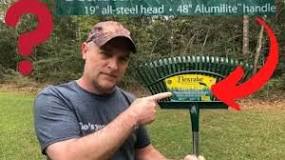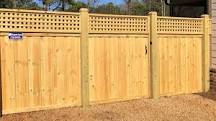Nope, a lawn rake is not the same as a scarifier! While both tools are used for lawn care, they serve different purposes and operate in distinct ways. A lawn rake is mainly for removing surface debris, while a scarifier digs deeper to tackle thatch buildup. Let’s break it down further.
What is a Lawn Rake?
A lawn rake is typically designed with wire tines that gently comb through the grass. Here’s what it does:
Surface Cleaning
- Debris Removal: It helps clear leaves, twigs, and other loose materials from the lawn.
- Gentle Touch: Great for light maintenance without disturbing the soil too much.
Limitations
- Shallow Reach: It doesn’t penetrate deeply enough to remove thatch effectively.
- Labor-Intensive: If you have a large lawn, using a rake can be quite the workout!
What is a Scarifier?
A scarifier, on the other hand, is a more robust tool designed for serious lawn care. Here’s how it works:
Deep Thatch Removal
- Blades vs. Tines: Scarifiers use sharp blades to cut into the thatch layer, effectively removing it from the soil.
- Aggressive Treatment: This tool is perfect for lawns suffering from thick mats of dead grass and moss.
Benefits
- Improved Health: By removing thatch, you allow water, nutrients, and air to reach the grass roots better.
- Enhanced Growth: Regular scarifying promotes a healthier, denser lawn.
When to Use Each Tool
Lawn Rake
- Best for light maintenance during fall or spring when you just need to tidy up.
Scarifier
- Ideal for spring or autumn when your lawn needs rejuvenation and you notice significant thatch buildup.
Conclusion
In summary, while both tools help maintain your lawn’s health, they are not interchangeable. A lawn rake is for surface cleaning, while a scarifier digs deeper to improve overall lawn vitality.
FAQ
Can I use a lawn rake instead of a scarifier?
Using a lawn rake instead of a scarifier won’t effectively tackle thatch problems. If your lawn has significant thatch buildup, you’ll need a scarifier for proper treatment.
How often should I scarify my lawn?
It’s generally recommended to scarify your lawn at least once a year. For lawns with heavy thatch, consider doing it twice—once in spring and once in autumn.
Is scarifying harmful to my lawn?
While scarifying can stress your grass temporarily, if done correctly and at the right times (spring or autumn), it actually benefits your lawn in the long run by promoting healthier growth.
Can I rent these tools?
Absolutely! Many garden centers and equipment rental shops offer both rakes and scarifiers for rent. This can be a cost-effective way to maintain your lawn without committing to purchasing equipment.







